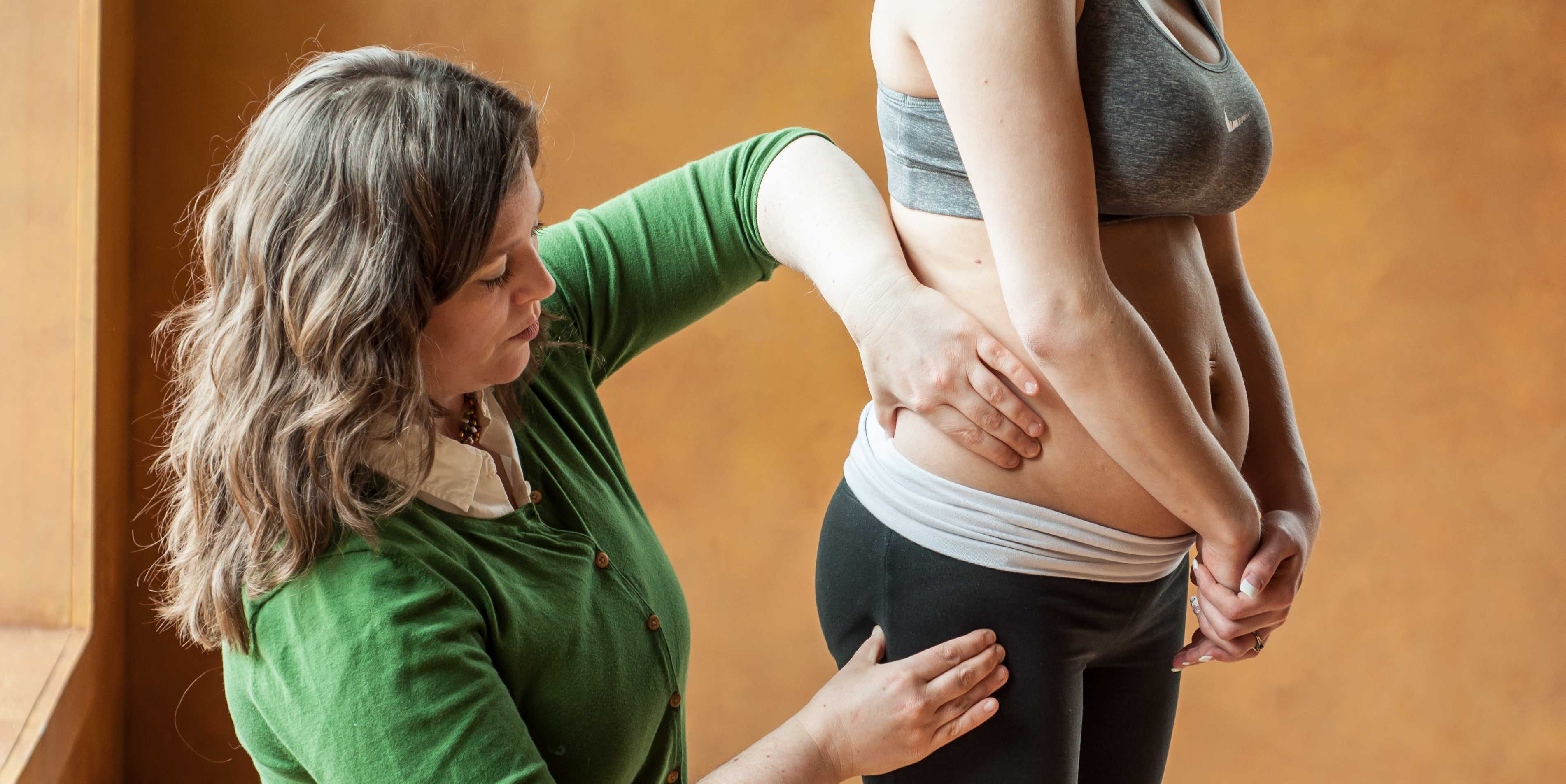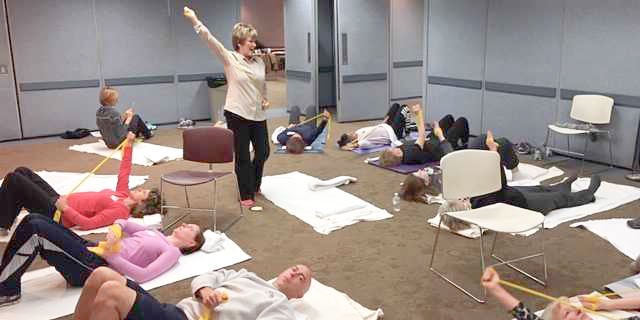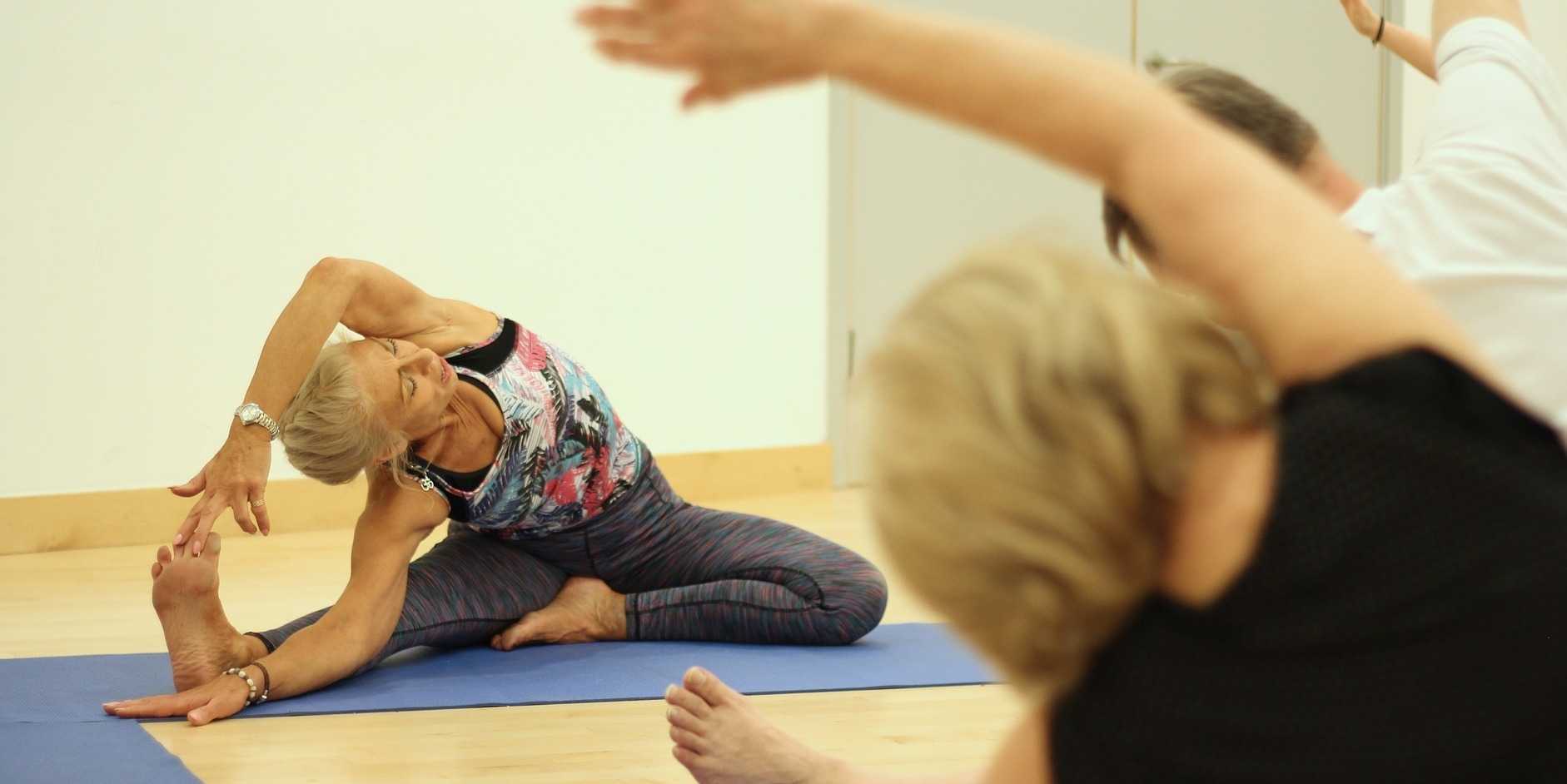
Regular exercise during pregnancy offers health benefits to both the mother and baby. However, existing evidence suggests that despite being beneficial, the current recommendations of exercise are not being met by many women during pregnancy (Downs 2003, Rebelle 2022). A reason for this could be a lack of guidance. A study by Nascimento showed that less than half of women receive exercise guidance during prenatal care meetings, and nearly half of exercising women stop their participation in exercise during pregnancy.
The American College of Obstetricians and Gynecologists (ACOG) Guidelines of 1985 are still commonly recommended to patients with a hard cut-off of 15 minutes of exercise and a heart rate of 140. However, there has been a significant shift in the mindset of professionals advocating for continued exercise in pregnancy. A hard cut-off for heart rate is difficult to adhere to as maternal heart rate and cardiac output both increase in pregnancy (Tan 2013), and in 2020 the ACOG updated its Guidelines to recommend using both the BORG RPE scale and maternal heart rate. Exercise intensity should be perceived as fairly light to somewhat hard on the Borg Rating of Perceived Exertion (RPE) scale, which ranges from 0 (which is no exertion) to 20 (which is maximal exertion). An easy and practical way to monitor intensity is with the Talk Test.
The current ACOG recommendations encourage 150 minutes of moderate aerobic activity per week during pregnancy and allow for prior levels of physical activity to be continued with OB approval in the absence of medical complications and contraindications. Those initiating exercise in pregnancy need to start slowly with 5 minutes of activity per day and increase slowly by 5 minutes weekly until they are able to exercise 30 minutes per day. Contact sports, activities that may carry a risk of falling or cause the body to become overheated, skydiving, scuba diving, and activities at over 6000 feet are not encouraged during pregnancy (Gascoigne 2023, ACOG 804 opinion).
Running is one way of maintaining exercise during pregnancy, however, many runners discontinue running during pregnancy. In one study, it was found that half the participants who ran before pregnancy reported stopping during pregnancy. During a 2022 study, pregnant runners shared reasons they stopped running, including nausea, fatigue, fear of miscarriage, anxiety, nervousness, and fear. Other factors included discomfort related to baby size and position, along with symptoms of pelvic floor dysfunction (James 2022). Current data suggests that the benefits of regular physical activity in an uncomplicated pregnancy include the possibility of increased uteroplacental blood flow at rest (Clapp 2006), a positive effect on the fetus’s autonomic cardiac regulation (Son 2020), a reduction in the risk of postpartum depression (Vargas- Terrones 2019), and a positive influence on neuro and language development in the first 18 months of age (Nino Cruz 2018).
Gait biomechanics change significantly in pregnancy with a wider step width, reduced hip flexion and extension, decreased stride length, and reduced trunk ROM commonly observed. A lot of these changes are thought to be in response to changes in the center of mass/center of gravity and to maintain balance. Increased ankle stiffness is also noted but is thought to actually have beneficial effects on balance during pregnancy (Conder 2019). Not a lot of research has been conducted on the actual kinematics exhibited by pregnant runners, however, there was a recent study that showed pregnant runners not only run slower but also have decreased trunk and pelvic rotation with increased activation of the Gluteal muscles (Bagwell 2024).
When treating pregnant runners, it may be necessary to make changes to speed (decrease), cadence (increase), and trunk lean in order to continue running. Gluteal muscle function during running is especially important in the pregnant runner. There is evidence that in pregnancy, there is an increase in foot width, shoe size, and dynamic overpronation of the feet (Segal 2010, Segal 2023, Heronemus 2020, Ramachandra 2016). In light of these changes, it is very important to consider new footwear. Other changes to allow continued running include wearing suitable abdominal support garments, braces, and good breast support, especially in the second and third trimesters. Pelvic support may also be necessary and could either be internal (pessary) or external in terms of compression/pelvic support garments.
Some pregnant runners may have pelvic symptoms (incontinence, pressure, heaviness, etc.) and other factors that do not permit them to continue running through pregnancy, but pelvic therapists can do a lot to encourage and support a patient who is pregnant and wants to continue running. Pelvic therapists can not only do a pelvic floor assessment at an appropriate time but can also perform a running form assessment, hip/knee/trunk muscle strength/mobility/kinematic assessment, and offer support via braces, pressure garments, and proper footwear recommendations.
If this topic interests you, then consider signing up for The Runner and Pelvic Health on April 12th. This is a beginner-level, one-day remote course designed to expand the participants’ knowledge of the pelvic floor with running athletes. Through lecture and labs by video and participation, participants will learn what normal and abnormal running mechanics are and how the muscles work simultaneously during running. This course includes advanced assessments to help diagnose the reason for movement dysfunction and is applicable for patients who present with pelvic pain, incontinence, constipation, prolapse, postpartum, and lumbar pain.
References
- Rebelle, Christiana & Jette, Shannon & Mills, John & Tinius, Rachel. (2022). Physical Activity Beliefs and Behaviors during Pregnancy and their Association with Provider Counseling among Women in the Southern United States. Physical Activity and Health. 6. 287. 10.5334/paah.210.
- Symons Downs D, Hausenblas HA. Women's exercise beliefs and behaviors during their pregnancy and postpartum. J Midwifery Womens Health. 2004 Mar-Apr;49(2):138-44. doi: 10.1016/j.jmwh.2003.11.009. PMID: 15010667.
- James, Megan & Moore, Isabel & Donnelly, Grainne & Brockwell, Emma & Perkins, Joanna & Coltman, Celeste. (2022). Running During Pregnancy and Postpartum, Part A: Why Do Women Stop Running During Pregnancy and Not Return to Running in the Postpartum Period? Journal of Women's Health Physical Therapy. Publish Ahead of Print. 10.1097/JWH.0000000000000228.
- Physical Activity and Exercise During Pregnancy and the Postpartum Period: ACOG Committee Opinion, Number 804. Obstet Gynecol. 2020 Apr;135(4):e178-e188. doi: 10.1097/AOG.0000000000003772. PMID: 32217980.
- Gascoigne, Emily L. et al. Physical activity and pregnancy outcomes: An expert review American Journal of Obstetrics & Gynecology MFM, January 2023, Volume 5, Issue 1, 100758
- Tan EK, Tan EL. Alterations in physiology and anatomy during pregnancy. Best Pract Res Clin Obstet Gynaecol. 2013;27:791–802. doi: 10.1016/j.bpobgyn.2013.08.001.
- Nascimento SL, Surita FG, Godoy AC, Kasawara KT, Morais SS. Physical Activity Patterns and Factors Related to Exercise during Pregnancy: A Cross-Sectional Study. PLoS One. 2015 Jun 17;10(6):e0128953. doi: 10.1371/journal.pone.0128953. Erratum in: PLoS One. 2015 Jul 15;10(7):e0133564. doi: 10.1371/journal.pone.0133564. PMID: 26083416; PMCID: PMC4470997.
- Conder R, Zamani R, Akrami M. The Biomechanics of Pregnancy: A Systematic Review. J Funct Morphol Kinesiol. 2019 Dec 2;4(4):72. doi: 10.3390/jfmk4040072. PMID: 33467386; PMCID: PMC7739277.
- ACOG Physical activity and exercise during pregnancy and the postpartum period. Obstet Gynecol. 2020;135:e178–88. doi: 10.1097/AOG.0000000000003772
- Heronemus MJ, Rabe K, Tolstykh I, Gross KD, Wise BL, Nevitt MC, Lewis CE, Hillstrom HJ, Segal NA; MOST Study Group. The Association of Parity with Greater Dynamic Pronation of the Feet. PM R. 2021 Feb;13(2):144-152. doi: 10.1002/pmrj.12381. Epub 2020 May 11. PMID: 32281293; PMCID: PMC7554144.
- Segal N, Eagles MS. The effects of pregnancy on shoe size and knee laxity. Am J Phys Med Rehabil 2010; 89:S41.
- Rabe KG, Segal NA, Waheed S, Anderson DD. The Effect of Arch Drop on Tibial Rotation and Tibiofemoral Contact Stress in Postpartum Women. PM R 2018; 10(11):1137–1144.
- Segal NA, Boyer ER, Teran-Yengle P, Glass NA, Hillstrom HJ, Yack HJ. Pregnancy leads to lasting changes in foot structure. Am J Phys Med Rehabil 2013; 92(3):232–240.
- Ramachandra, Preetha & Kumar, Pratap & Kamath, Asha & Maiya, Arun. (2016). Do Structural Changes of the Foot Influence Plantar Pressure Patterns During Various Stages of Pregnancy and Postpartum? Foot & ankle specialist. 10. 1938640016685150. 10.1177/1938640016685150
- Clapp JF. Influence of endurance exercise and diet on human placental development and fetal growth. Placenta. 2006. Jun‐Jul;27(6‐7):527‐34.
- Son JS, Zhao L, Chen Y, et al. Maternal exercise via exerkine apelin enhances brown adipogenesis and prevents metabolic dysfunction in offspring mice. Sci Adv. 2020;6(16).
- Niño Cruz GI, Ramirez Varela A, da Silva ICM, Hallal PC, Santos IS. Physical activity during pregnancy and offspring neurodevelopment: A systematic review. Paediatr Perinat Epidemiol. 2018. 32(4):369‐79
- Vargas‐Terrones M, Barakat R, Santacruz B, Fernandez‐Buhigas I, Mottola MF. Physical exercise programme during pregnancy decreases perinatal depression risk: a randomised controlled trial. Br J Sports Med. 2019. 53(6):348‐53.
AUTHOR BIO
Aparna Rajagopal, PT, MHS, WCS, PRPC, CAPP-OB-Certified
 Aparna Rajagopal PT, MHS, WCS, PRPC, Capp -OB Certified (she/her) holds a Bachelor of Science degree in Physical Therapy from India and a Master of Health Sciences from the University of Indianapolis. She developed a growing interest in treating pregnant and postpartum patients in 2003. The birth of her daughter in 2006 served as the driving force behind her passion for the field of pelvic dysfunction. She treats men, women, and children with urological, gynecological, and colorectal issues. Her work with female athletes led her to realize the importance of correct breathing techniques in rehabilitation and led her to co-author the breathing and diaphragm class.
Aparna Rajagopal PT, MHS, WCS, PRPC, Capp -OB Certified (she/her) holds a Bachelor of Science degree in Physical Therapy from India and a Master of Health Sciences from the University of Indianapolis. She developed a growing interest in treating pregnant and postpartum patients in 2003. The birth of her daughter in 2006 served as the driving force behind her passion for the field of pelvic dysfunction. She treats men, women, and children with urological, gynecological, and colorectal issues. Her work with female athletes led her to realize the importance of correct breathing techniques in rehabilitation and led her to co-author the breathing and diaphragm class.
She serves as lead therapist for the pelvic dysfunction program at Henry Ford Macomb Hospital, where she mentors and teaches other pelvic therapists. She is a consultant for the hospital's Sports Therapy team for the athletic triad syndrome. She frequently presents and educates physicians, residents, physical therapists, and community support groups on physical therapy treatment for pelvic floor dysfunction. She serves as co-chair of the continuing education committee at her hospital system, where she helps to write and develop courses.









































